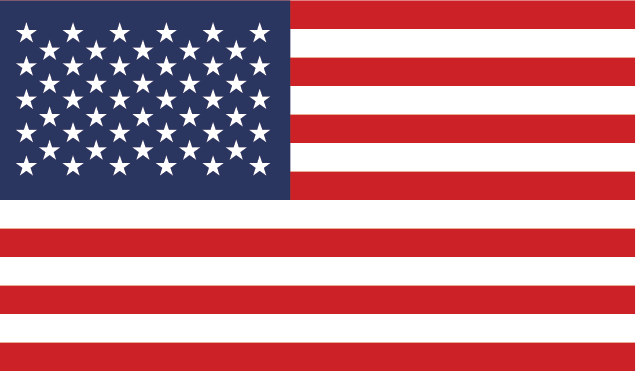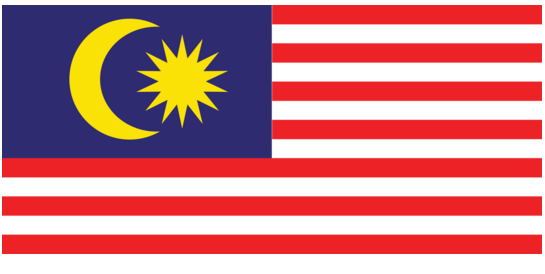
5 Funny Threads Ideas (Free Guide)
funny threads content ideas
Introduction to Funny Threads Content
Humor is the social glue of Instagram Threads, transforming passive scrolling into active engagement through relatable jokes, witty observations, and lighthearted interactions. Platforms like Threads thrive on authenticity, and humor—when executed well—cuts through the noise by humanizing brands and creators. Whether it’s a meme that mirrors everyday struggles or a playful poll that sparks curiosity, funny content fosters connection by inviting audiences to laugh, share, and participate.
This guide serves as a roadmap for crafting humor that resonates, offering 5 proven strategies to elevate your Threads game. From memes that tap into universal experiences to interactive polls that drive participation, we’ll break down how to leverage humor to boost engagement, build community, and leave a lasting impression. By the end of this article, you’ll have a clear toolkit to create funny Threads content that aligns with your brand voice while keeping your audience entertained and eager for more.
(Transition to next section:)
With the foundation set, let’s dive into the top 5 funny Threads ideas that blend creativity with strategy to maximize reach and interaction.
Top 5 Funny Threads Ideas to Boost Engagement
Humor is a universal language that cuts through noise and fosters connection. Here’s how to leverage it effectively on Instagram Threads:
1. Memes & Relatable Humor
Memes thrive on shared experiences, making them ideal for sparking engagement. For example, the “Distracted Boyfriend” meme format became viral gold for illustrating relatable scenarios like relationship dynamics or pop culture moments3. On Threads, brands can adapt this by:
- Creating niche-specific memes: Use trending formats to highlight everyday struggles (e.g., “When your Wi-Fi acts up vs. when it’s working” with a split-screen meme).
- Leveraging inside jokes: Reference industry-specific humor (e.g., “When you’re a social media manager but your boss still uses MySpace”)5.
- Encouraging UGC: Ask followers to submit their own meme ideas, then feature the best ones in a carousel post3.
Example: A coffee brand could post a meme like, “When you finally get your morning brew vs. when you’re still half-asleep” with a split image of a zombie and a caffeinated superhero1.
2. Observational Comedy
Observational humor thrives on witty takes on mundane life. For instance, the line “They say life is a game, but who wrote these insane rules? It’s like playing chess in a tornado” from 1 perfectly captures relatable frustration. Brands can:
- Highlight absurd daily moments: “Why do socks disappear in the wash but plastic bags survive for millennia?”
- Use hyperbole: “TGIF, folks. The weekend is calling, and I must answer with a resounding ‘Yes!’”1.
- Play with wordplay: “Born to read, forced to post on Threads all day”1.
Pro Tip: Pair text with eye-catching visuals (e.g., a tornado graphic for the chess analogy) to amplify the joke.
3. Interactive Polls/Questions
Engagement skyrockets when audiences participate. Try:
- Word association games: “I’ll start: Banana 🍌. Your turn!”1.
- Hypothetical scenarios: “What’s the worst advice you’ve ever received?”1.
- Trending topic hooks: “Happy #NationalCoffeeDay! How are you celebrating? Latte or mocha?”1.
Example: A travel brand could ask, “What’s your next destination… and why?”1, then compile responses into a carousel post.
4. Behind-the-Scenes Antics
Audiences love peeking behind the curtain. For instance, Nike's “Behind the Swoosh” series offered exclusive looks at design processes3. On Threads, brands can:
- Share “bloopers”: A video of a team member tripping over a product display.
- Reveal quirky rituals: “Celebrating #WorldSleepDay by taking a nap under our desk”1.
- Poke fun at industry norms: “You’re so funny!” Thanks, I sent 100 Threads ideas to my CMO, and only two were approved1.
Pro Tip: Use Reels or short videos to showcase these moments for maximum shareability5.
5. Exaggerated Scenarios
Hyperbole and absurdity create memorable content. For example:
- Over-the-top analogies: “Just me and my [product] against the world”1.
- Silly challenges: “Today’s challenge: explore your own city like a tourist!”1.
- Satirical takes: “Googled my symptoms, and it turns out I just needed to buy [your product]”1.
Example: A tech brand could post, “When your Wi-Fi is acting up: ‘I’ll just restart the router… and the modem… and the entire internet’” with a meme of a frustrated user3.
(Transition to next section:)
With these ideas, you’re equipped to craft humor that resonates. Next, we’ll dive into actionable tips for ensuring your jokes land—without alienating your audience.
How to Craft Humor That Resonates
Humor thrives on relatability and timing, but crafting jokes that land requires a strategic approach. Below are actionable frameworks to ensure your humor resonates without alienating audiences:
1. Audience-Centric Jokes
Tailor humor to your audience’s experiences and pain points. For example, a coffee brand might post: "Just me and my emotional support [coffee mug]" 1, leveraging universal morning struggles. To refine this:
- Identify shared struggles: Highlight common frustrations (e.g., Wi-Fi issues, Monday blues) using hyperbole: "When your Wi-Fi acts up vs. when it’s working" 1.
- Use inside jokes: Reference niche industry humor, like "When you’re a social media manager but your boss still uses MySpace" 5, but ensure clarity for broader audiences.
- Test with polls: Ask followers, "What’s the worst advice you’ve ever received?" 1, then craft jokes around the most relatable responses.
2. Comparison Humor
Contrast absurd scenarios to amplify laughs. For instance:
- Split-screen memes: Pair extremes (e.g., "Born to read, forced to post on Threads all day" 1) with visuals like a split image of a book vs. a phone.
- Absurd analogies: "They say life is a game, but who wrote these insane rules? It’s like playing chess in a tornado" 1 uses hyperbole to highlight relatable chaos.
- Product-centric twists: "Googled my symptoms, and it turns out I just needed to buy [your product]" 1 humorously positions products as solutions to exaggerated problems.
3. Surprise Elements
Unexpected twists keep audiences engaged. Try:
- Subverted expectations: Start with a cliché setup, then pivot. Example: "TGIF, folks. The weekend is calling, and I must answer with a resounding ‘Yes!’" 1 adds a playful twist to a common phrase.
- Absurd scenarios: "Today’s challenge: explore your own city like a tourist!" 1 invites participation while poking fun at mundane routines.
- Satirical takes: "Celebrating #WorldSleepDay by taking a nap under our desk" 1 uses irony to highlight workplace quirks.
4. Meme Integration
Memes are shareable gold. To leverage them effectively:
- Adapt trending formats: Use the "Distracted Boyfriend" meme 3 to illustrate industry-specific struggles (e.g., "When your Wi-Fi acts up vs. when it’s working").
- Encourage UGC: Ask followers to submit meme ideas, then feature the best in a carousel post 3.
- Pair with visuals: Add emojis or graphics to enhance punchlines (e.g., a tornado graphic for the chess analogy 1).
Balancing Humor with Brand Voice
Avoid forced jokes by aligning humor with your brand’s personality. For example:
- Use emojis strategically: Add a ☕️ to coffee-related jokes 1 or a 🌪️ to chaotic analogies 1 to reinforce tone.
- Stay inclusive: Avoid niche references that exclude parts of your audience. Instead, focus on universal themes like caffeine dependency or work-life chaos.
- Test and iterate: Repurpose popular content 5 and tweak based on engagement metrics (e.g., comments, shares).
(Transition to next section:)
With these frameworks, you’re equipped to craft humor that resonates. Next, we’ll explore engagement strategies to maximize reach and interaction.
Engagement Strategies for Maximum Reach
To maximize the impact of funny Threads content, strategic integration of trending topics, seasonal humor, and call-to-action prompts is essential. These tactics not only boost visibility but also foster deeper audience interaction. Below are actionable methods to amplify reach, supported by examples from leading platforms like Hookle and Contentdrips:
1. Trending Topic Integration
Aligning content with viral trends ensures relevance and discoverability. For instance, seasonal hashtags like #NationalCoffeeDay or #WorldSleepDay can be humorously leveraged to tap into widespread conversations1. Brands like coffee companies might post:
“Happy #NationalCoffeeDay! How are you celebrating? Latte or mocha?”
This approach capitalizes on existing momentum while inviting participation.
Trending meme formats (e.g., “Distracted Boyfriend”) can also be adapted to niche audiences. For example, a tech brand might use the meme to highlight Wi-Fi struggles:
“When your Wi-Fi acts up vs. when it’s working” (split-screen meme)1.
Pairing these with trending audio or visuals increases shareability.
2. Seasonal and Timely Humor
Humor tied to holidays, events, or cultural moments resonates instantly. For example:
- Holiday-themed jokes: A brand could post, “Celebrating #WorldSleepDay by taking a nap under our desk”1, blending irony with relatability.
- Event-driven prompts: “What’s your next travel destination… and why?”1 ties into wanderlust trends while encouraging engagement.
Pro Tip: Use Instagram’s built-in features like countdown stickers or question prompts to align with seasonal themes.
3. Call-to-Action Prompts
CTAs drive direct interaction, turning passive viewers into active participants. Examples include:
- Polls: “What’s the worst advice you’ve ever received?”1 invites followers to share humorous anecdotes.
- Word association games: “I’ll start: Banana 🍌. Your turn!”1 sparks creativity and encourages replies.
- User-generated content (UGC) campaigns: Encourage followers to submit meme ideas or funny stories, then feature the best in a carousel post3.
Example: A fashion brand might post:
“Share your favorite GIF that never fails to make you laugh out loud”1, then curate submissions into a viral thread.
4. Leveraging Interactive Features
Instagram’s interactive tools (polls, quizzes, sliders) are designed to boost engagement. For instance:
- AMA/Q&A sessions: Use the “Ask Me Anything” sticker to invite questions, then respond with witty, on-brand answers3.
- Hypothetical scenarios: “What’s the craziest thing that’s ever happened to you?”1 encourages storytelling.
- Product-centric CTAs: “Just me and my [product] against the world”1 positions the brand as a relatable ally.
5. Cross-Platform Synergy
Repurpose trending content from platforms like TikTok or YouTube to Threads. For example, a viral TikTok sound can be paired with a humorous caption like:
“When your Wi-Fi is acting up: ‘I’ll just restart the router… and the modem… and the entire internet’”3.
This approach taps into existing virality while adapting it to Threads’ text-centric format.
Transition: By combining these strategies—trending topics, seasonal hooks, CTAs, and interactive elements—creators can transform funny Threads content into a viral machine. Next, we’ll explore how to avoid common pitfalls that derail humor, ensuring your jokes land without alienating audiences.
Avoiding Common Pitfalls in Humorous Content
Humor is a double-edged sword: when executed well, it humanizes brands and fosters connection, but missteps can alienate audiences or dilute authenticity. To navigate this tightrope, focus on three critical areas: avoiding offensive humor, maintaining brand voice, and balancing humor with authenticity.
1. Avoiding Offensive Humor
Humor thrives on relatability, but it risks backlash if it inadvertently targets marginalized groups or reinforces stereotypes. To prevent this:
- Test with diverse audiences: Run jokes by colleagues from varied backgrounds to catch unintended biases. For example, a meme about caffeine dependency might resonate universally, but one mocking specific cultural habits could backfire1.
- Steer clear of sensitive topics: Avoid humor tied to politics, religion, or social issues unless it’s central to your brand’s mission. Instead, focus on universal themes like work-life chaos or everyday absurdities (e.g., “Why do socks disappear in the wash?”)1.
- Use self-deprecating humor: Poke fun at your brand’s quirks rather than others. For instance, a social media manager might joke, “You’re so funny!” Thanks, I sent 100 Threads ideas to my CMO, and only two were approved”1, highlighting internal struggles without targeting others.
2. Maintaining Brand Voice
Consistency is key to building trust. Forced or inconsistent humor can confuse audiences and weaken brand identity:
- Align humor with core values: A luxury brand might use dry wit, while a playful startup could embrace absurdity. For example, a coffee brand’s joke about “emotional support [coffee mug]”1 aligns with its casual, relatable tone.
- Avoid niche references: Inside jokes about industry-specific quirks (e.g., *“When your boss still uses MySpace”) risk alienating broader audiences. Instead, use universal analogies like “Life is like playing chess in a tornado”1.
- Use emojis strategically: Add visual cues like ☕️ or 🌪️ to reinforce tone without overcomplicating the message1.
3. Balancing Humor with Authenticity
Audiences can spot inauthenticity instantly. Overdoing humor or prioritizing virality over sincerity undermines credibility:
- Stay genuine: Avoid forced jokes or trends that don’t align with your brand. For instance, a travel brand’s “explore your city like a tourist” challenge1 feels authentic if paired with real user stories.
- Pair humor with purpose: Use jokes to highlight brand values. A tech company might satirize “Googling symptoms”* to subtly promote its product as a solution1.
- Iterate based on feedback: Monitor engagement metrics (e.g., comments, shares) and adjust. If a meme falls flat, refine it using audience insights—like repurposing a “worst advice” poll1 into a carousel of funny responses.
By addressing these pitfalls, brands can craft humor that resonates without compromising integrity. The next section explores real-world examples of successful funny Threads content to inspire your strategy.
Real-World Examples & Inspiration
Humor on Instagram Threads thrives when brands balance creativity with authenticity. Below are three standout examples of brands leveraging funny content effectively, analyzed for actionable insights:
1. Raw Flow Jewelry’s Relatable Memes
Strategy: Tapping into universal struggles with niche-specific humor.
Example: A post like “Just me and my emotional support [necklace] against the world” 1 uses hyperbole to position jewelry as a daily companion.
Why It Works:
- Relatability: The “emotional support” angle resonates with audiences seeking comfort in small luxuries.
- Visual Appeal: Pairing text with a split-screen meme (e.g., a stressed person vs. a calm one wearing the necklace) amplifies the joke.
- Audience Interaction: Encouraging followers to share their own “emotional support” items fosters UGC and community building.
2. Michelle’s Nailstudio’s Behind-the-Scenes Antics
Strategy: Humanizing the brand through quirky, self-deprecating humor.
Example: A post like “Celebrating #WorldSleepDay by taking a nap under our desk” 1 pokes fun at workplace quirks while aligning with a trending hashtag.
Why It Works:
- Authenticity: Revealing “bloopers” or team rituals (e.g., napping) makes the brand feel approachable.
- Trend Integration: Leveraging #WorldSleepDay adds discoverability without feeling forced.
- Audience Connection: The humor subtly highlights dedication (“we’re so tired we nap at work”) while keeping the tone light.
3. Sales Memes for Industry-Specific Laughs
Strategy: Using inside jokes to resonate with niche audiences.
Example: A meme like “When your Wi-Fi acts up vs. when it’s working” 1 adapts the viral “Distracted Boyfriend” format to tech struggles.
Why It Works:
- Audience-Centric: Targets shared frustrations (e.g., Wi-Fi issues) familiar to remote workers or small businesses.
- Visual Storytelling: Split-screen visuals (e.g., a frustrated user vs. a triumphant one) enhance shareability.
- Adaptability: Brands can tweak the meme to fit their product (e.g., “When your Wi-Fi acts up vs. when it’s working” for a router company).
Transition: These examples demonstrate how humor can be tailored to brand voice while driving engagement. By focusing on relatability, visual storytelling, and audience interaction, creators can turn funny content into a viral machine.
Conclusion & Next Steps
The key to mastering funny Threads content lies in balancing creativity with strategy. By leveraging memes, observational humor, interactive polls, behind-the-scenes antics, and exaggerated scenarios, creators can turn relatable moments into shareable gold. Remember: humor thrives on audience-centric jokes, comparison humor, and surprise elements that align with your brand’s voice1.
Next steps:
- Experiment fearlessly: Test different formats (e.g., split-screen memes, UGC campaigns) and track engagement metrics to refine your approach.
- Stay updated: Follow trending topics and meme formats to capitalize on viral momentum1.
- Leverage resources:
Humor is a dynamic tool—keep it fresh, authentic, and audience-focused. With practice, your Threads will become a hub for laughter, connection, and brand loyalty. Now, go forth and make the internet smile!
(Transition to next section:)
By combining these strategies—trending topics, seasonal hooks, CTAs, and interactive elements—creators can transform funny Threads content into a viral machine. Next, we’ll explore how to avoid common pitfalls that derail humor, ensuring your jokes land without alienating audiences.
Elevating Your Social Strategy with PONGO
Seamless Integration with Social Content
Transforming Ideas into Engagement
In the vibrant world of Funny Threads and engaging social media content, PONGO TECH stands out as an essential ally. Our expertise in content creation perfectly aligns with the need for captivating humor and dynamic interactions on platforms like Instagram Threads. By leveraging PONGO’s localized content strategies, you can enhance the humorous elements discussed in your guide, making each thread not only engaging but also culturally resonant.
Why Partner with PONGO?
Leading the Way in Social Media Excellence
PONGO TECH is a trailblazer in the Southeast Asian social media marketing scene, renowned for its creative flair and unparalleled influencer network. We empower brands to shine brightly through our proprietary PongoShare SaaS platform, which connects you with over 100,000 influencers worldwide. Our data-driven approach ensures that your funny content reaches the right audience at the right time, significantly boosting engagement and brand awareness.
Tackling Challenges with PONGO
Solutions for Enhanced Audience Connection
Navigating the complexities of social engagement and maintaining brand voice can be daunting. PONGO TECH helps you avoid common pitfalls by merging humor with authenticity, ensuring every post reinforces your brand’s value. Our tailored strategies uniquely position your content to resonate deeply with audiences, turning casual viewers into loyal followers.
Start Your Journey with Us
Transform Your Engagement Reach Today
Ready to transform your social media strategy with the innovative solutions PONGO TECH offers? Let us be your partner in achieving maximum reach and engagement. Visit our Contact Us page to learn more about how we can elevate your brand’s social presence and start crafting unforgettable funny threads today!
 English
English 



